Generaladmiral Otto Schniewind (14.12.1897–26.3.1964) was not implicated in the plot, and he never held a minor role. From March 1943, C-in-C Naval Group Command North, he entered Führer-Reserve 31.7.1944. For the involvement of the Kriegsmarine see Hillmann, ‘Der 20 Juli und die Marine’.
Eberbach vastly overestimates the extent of the support for the coup attempt. The basic problem of the plotters was that only the odd general supported it. The refusal of von Manstein was the rule, not the exception.
Why Hitler appointed Guderian to act as Chief of the Army General Staff on the evening of 20.7.1944 because of suspicions about Zeitzler has never been properly addressed by research. The plotters had recruited Guderian to gauge the depth of support amongst the Army generals. Subsequently Guderian indulged in homage to Hitler and his orders then bore evidence of a ruthless fanaticism in the sense of a ‘fight to the last shell’. Wilhelm, ‘Guderian’.
On Thomale see note 140 140 Generalleutnant Wolfgang Thomale (25.2.1900–20.10.1978). From 1.6.1938–14.5.1941 Staff, OKH Inspekteur der Panzertruppen; 15.5.1941 CO, III.Pz.Reg.25; 5.8.1941, CO, Pz.Reg.27; 1.4.1942 OKH liaison officer between Chief of Army Ordnance and CO, Ersatzheer, Generaloberst Friedrich Fromm and Armaments Minister Speer; 1.3.1943 Chief of Staff, Insp. Gen. der Panzertruppen.
above. He was not implicated in the 20 July plot. What Eberbach meant by his observation that Thomale had been courageous in Berlin is unknown.
For Hitler’s daily itinerary see Seidler/Zeigert, ‘Führerhauptquartiere’, pp. 110–14; Neumärker, ‘Wolfsschanze’, pp. 74–7.
General der Artillerie Eduard Wagner (1.4.1894–23.7.1944), from 1.8.1940 Army QM-General, joined the Opposition circle around Halder in 1939 but then immersed himself in his duties until 1942 and was thus implicated in the brutal policies in the war in the east. A long-term waverer, by the summer of 1944 he had become a leading advocate of the need to assassinate Hitler. He eluded his pursuers by suicide. Peter, ‘Eduard Wagner’.
Oberst Eberhard Finckh (7.11.1899–30.8.1944), friendly with Stauffenberg from 1936, implicated in plot in Paris as Senior QM to Military Cdr, France. Arrested 26.7.1944, condemned to death by People’s Court 30.8.1944 and executed same day at Berlin-Plötzensee.
General der Infanterie Walter Buhle (26.10.1894–27.12.1959), 1.9.1939 Chief, Organisations-Abt. at OKH; from 15.2.1942 Chief of OKW Army Staff; 1.2.1945 Chief of Army Ordnance. He suffered minor injuries in the 20 July blast.
Eberbach means Oberst Joachim Meichssner (4.4.1906–29.9.1944). At OKH from 1937, Olbricht recruited him to the conspiracy. Temporarily active with Buhle at OKW Army Staff, he was then appointed Chief of the Organisations-Abt., Wehrmacht Command Staff, where he had access to the Führer’s situation conferences but did not want to be the assassin. Arrested end of July 1944, sentenced to death by the People’s Court 29.9.1944 and executed same day at Berlin-Plötzensee.
On 10.7.1944 Hitler ordered the C-in-C Ersatzheer and Chief of Army Ordnance to set up 15 new ‘Sperr-Divisionen’ (barrier divisions) (29.Welle) as soon as possible. The intention was originally that they should protect the Reich borders in the East with effect from 1.9.1944. On 13.7.1944 the units were redesignated ‘Grenadier Divisions’, and by the beginning of October 1944 the 17 divisions of 29.Welle were now renamed ‘Volksgrenadier Divisions’. Equipped only with anti-tank guns, artillery and transport, they were used mainly in the east from August 1944. It is not known if Hitler’s idea for the barrier divisions influenced the conspirators to act at a particular time. Kroener, ‘Fromm’, esp. p. 667.
The former Battle Commandant of Aachen, Oberst Wilck, expressed the opinion on 28.10.1944 that the Army was 40 per cent Nazi and 60 per cent ‘against’. If the Führer held on to the reins of power and that was the split, then the war would go on until Berlin fell and Germany was destroyed, Wilck prophesied. SRGG 1067, 28.10.1944, TNA, WO 208/4169.
Generalleutnant Paul Gerhard (20.4.1881–12.10.1953), from 1.8.1940 to 19.1.1945 Wehrersatz-Inspecteur, Allenstein. He had been CO, Inf.Reg.7 in 1931.
Freidrich Werner Graf von der Schulenburg (20.11.1875–10.11.1944), from 1934 to 1941 German ambassador to Moscow, joined the Goerdeler circle of resistance workers and was to have been Foreign Secretary had the coup been successful. Executed at Berlin-Plötzensee.
In a 1953 report, Pfuhlstein stated that Canaris had also been present, ‘Canaris and Oster were standing together naked at the washbasin, Oster with a toothbrush in his mouth, completely numbed, gazing at me with a look of total horror. Canaris, who seemed a broken man physically, also stared at me in horror. He was holding the washbasin with both hands so as not to sink to his knees.’ Quoted from Höhne, ‘Canaris’, p. 548. Generalmajor Hans Oster (9.8.1888–9.4.1945), from 1939 Head of OKW Abwehr Overseas Office at HQ, was one of the leading figures of the resistance movement; expelled from the Wehrmacht, 16.3.1943. The conspirators planned for him to be President of the Reich Military Court in the event of a successful coup. Found guilty of treason by SS tribunal at Flossenbürg concentration camp 8.4.1945 and executed illegally the following day. The Gestapo found a letter on Oster addressed to Canaris in which Pfuhlstein was described as a reliable man ‘for the envisaged task’. GRGG 285(c), TNA, WO 208/4177. In his interrogation by the British, Pfuhlstein was very critical of Admiral Canaris, calling him a ‘desk general’. Höhne, ‘Canaris’, pp. 547–51; ‘Spiegelbild einer Verschwörung: Die Kaltenbrunner-Bericht’ pp. 370f, 405–8.
At Küstrin, Pfuhlstein met the following: General der Panzertruppe von Esebeck, Chief of Wehrkreis Command XVII (Vienna); Generalleutnant Sinzinger, City Commandant, Vienna; Generalmajor Siegfried von Stülpnagel, City Commandant, Stettin; Generalleutnant Speidel, Chief of Staff, Army Group B; Major Johann von Hassel, son of ambassador Ulrich von Hassel; Oberstleutnant von Kluge, son of the field marshal; Major Hoepner, son of Generaloberst Erich Hoepner; Major Fellgiebel, brother of General Erich Fellgiebel; Krieggerichtsrat Dr Kayser; Hauptmann Paulus, son of the field marshal; and Oberst von Cannstein, formerly of the Kavallerie-Schule, Blomberg. GRGG 285(c), TNA, WO 208/4177.
General der Infanterie Joachim von Stülpnagel (5.3.1880–15.7.1968), ended World War I as head of OHL Organisations-Abt. Between the wars he was a close colleague of General Hans von Seeckt. Pensioned-off 31.12.1931. After 20.7.1944 arrested as a ‘politically unreliable’ general and held for several months, including a stay at Ravensbrück concentration camp. Siegfried von Stülpnagel was a brother of Joachim and was detained between 5.8.1944 and 22.4.1945.
Ernst August Prinz von Hannover (1914–87) during the Russian campaign an Oberleutnant on Staff, Pz.Gr.4 (Generaloberst Hoepner). Severely wounded at Kharkov in the spring of 1943, he was arrested after 20 July and spent a few weeks at Gestapo HQ.
Читать дальше

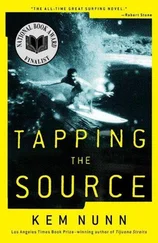
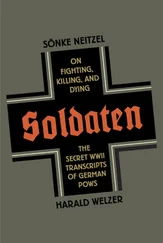

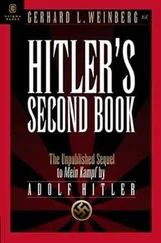
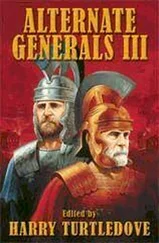
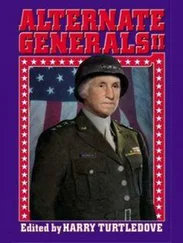

![Traudl Junge - Hitler's Last Secretary - A Firsthand Account of Life with Hitler [aka Until the Final Hour]](/books/416681/traudl-junge-hitler-s-last-secretary-a-firsthand-thumb.webp)



